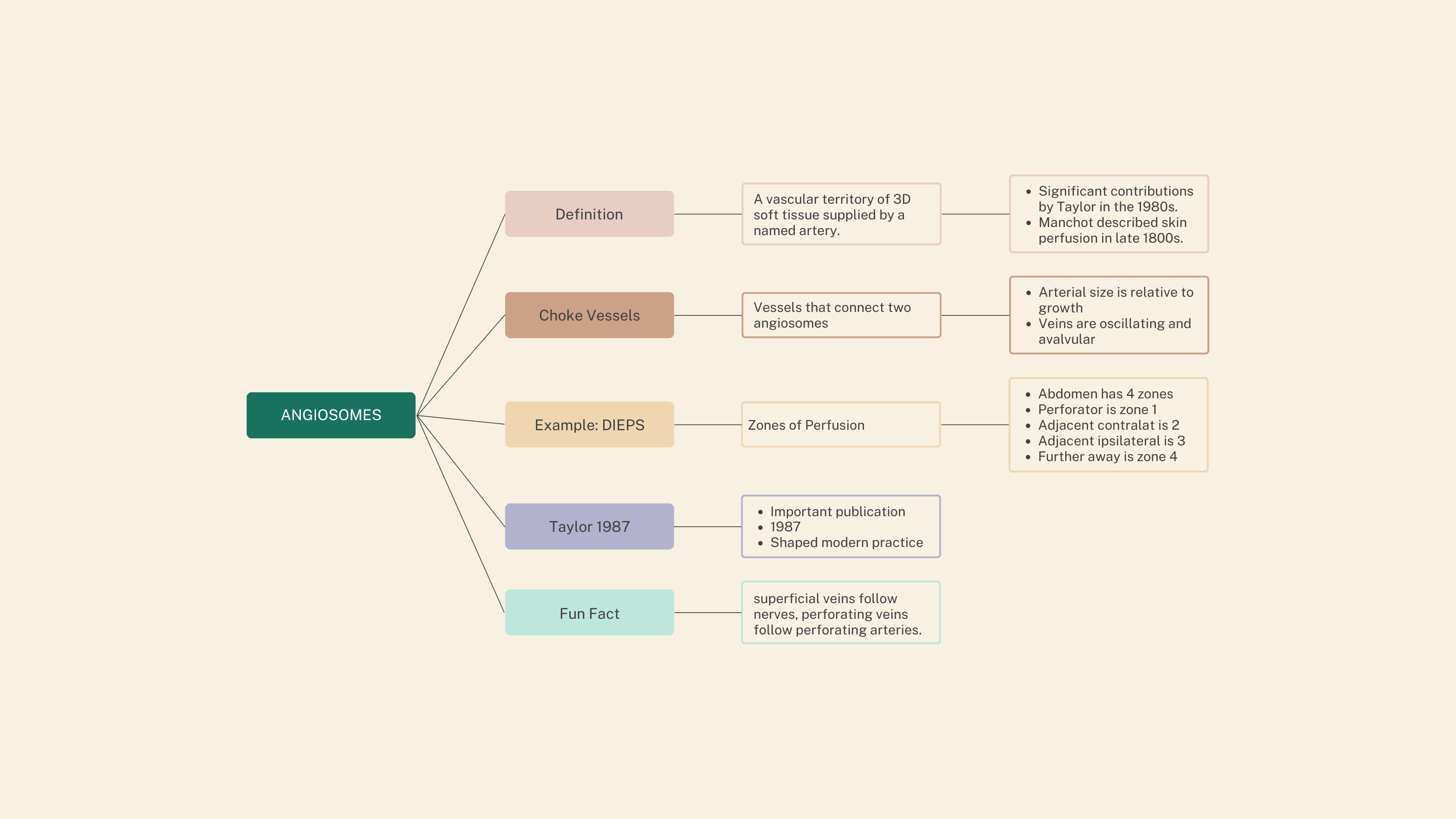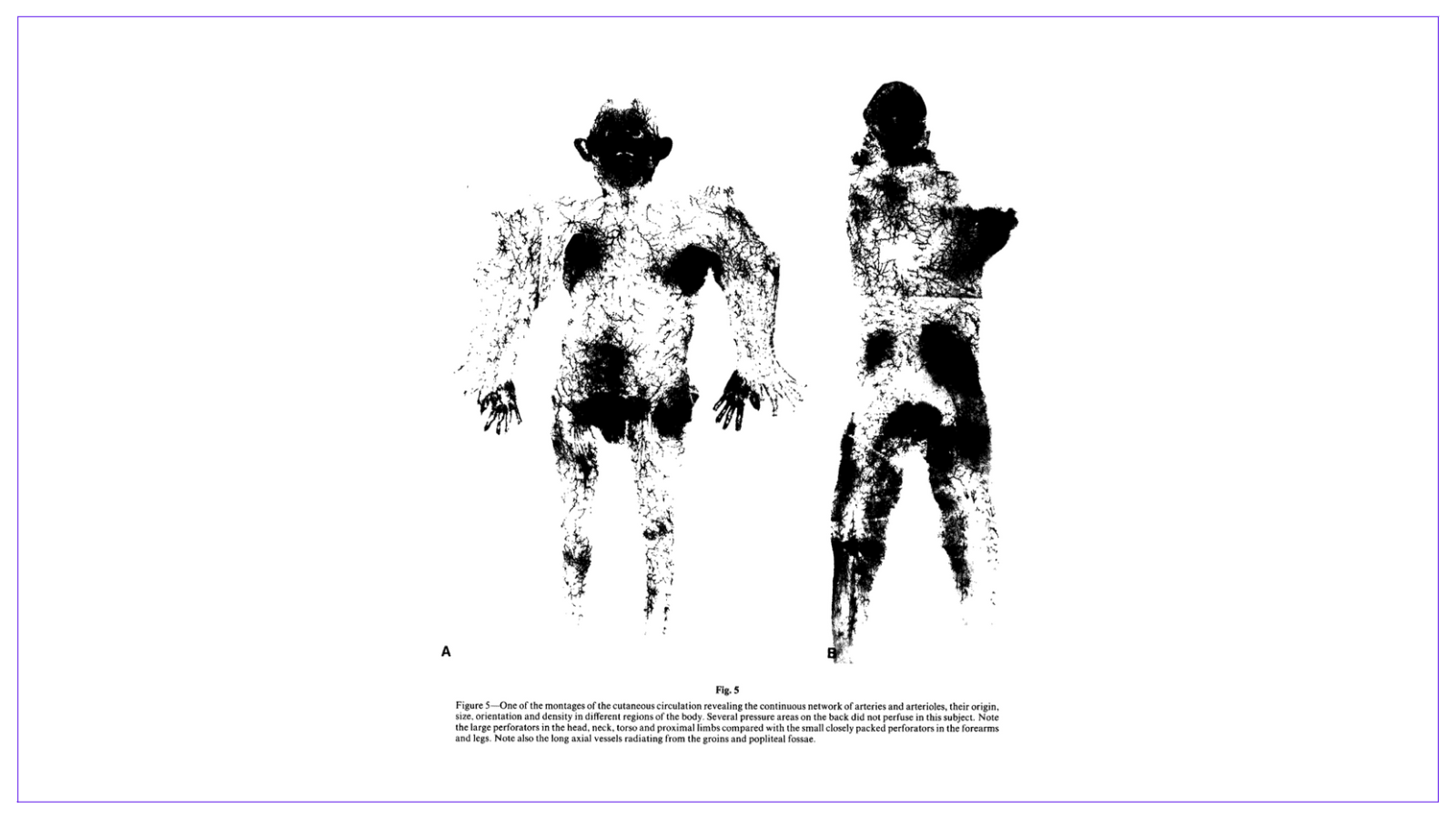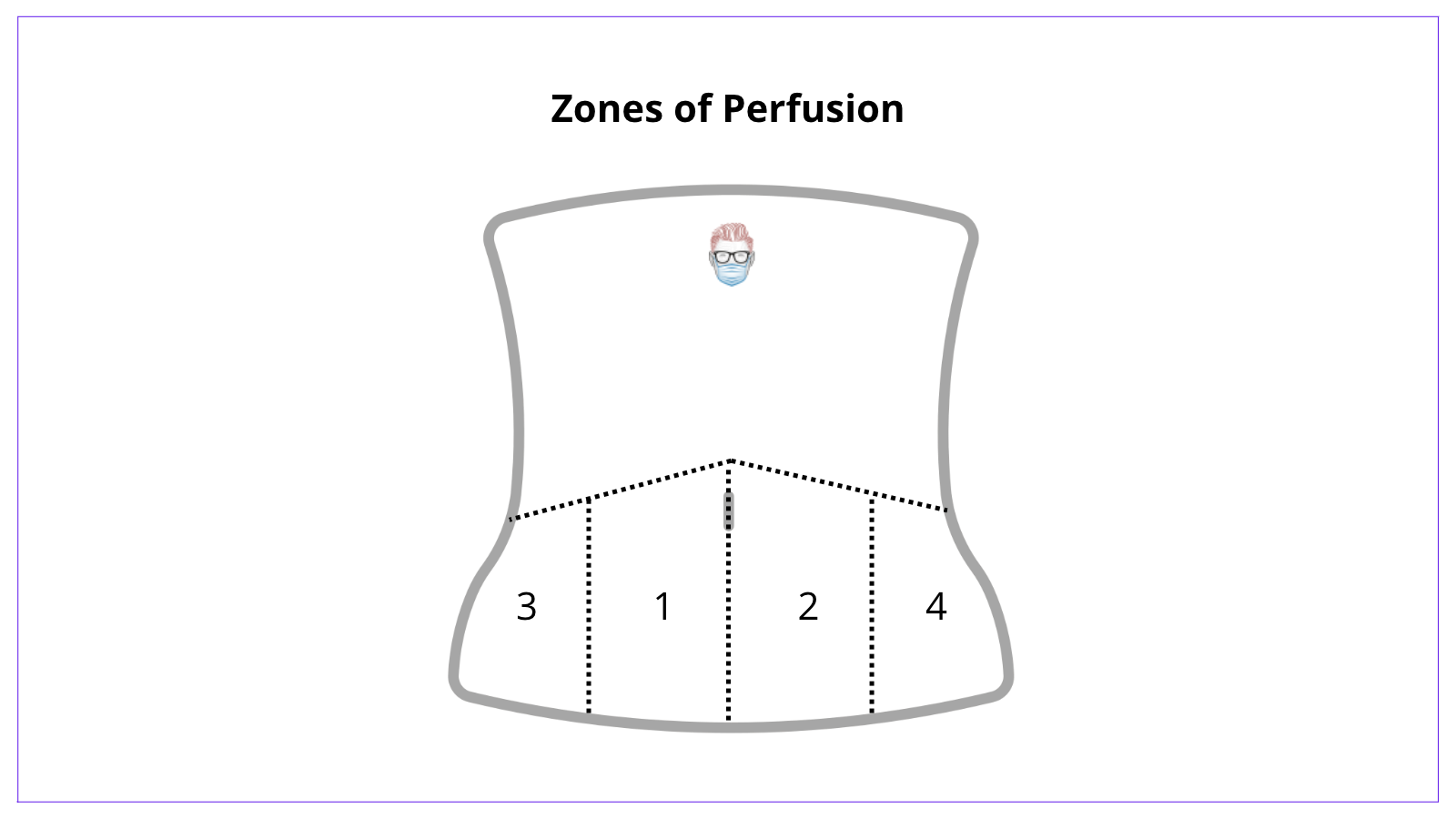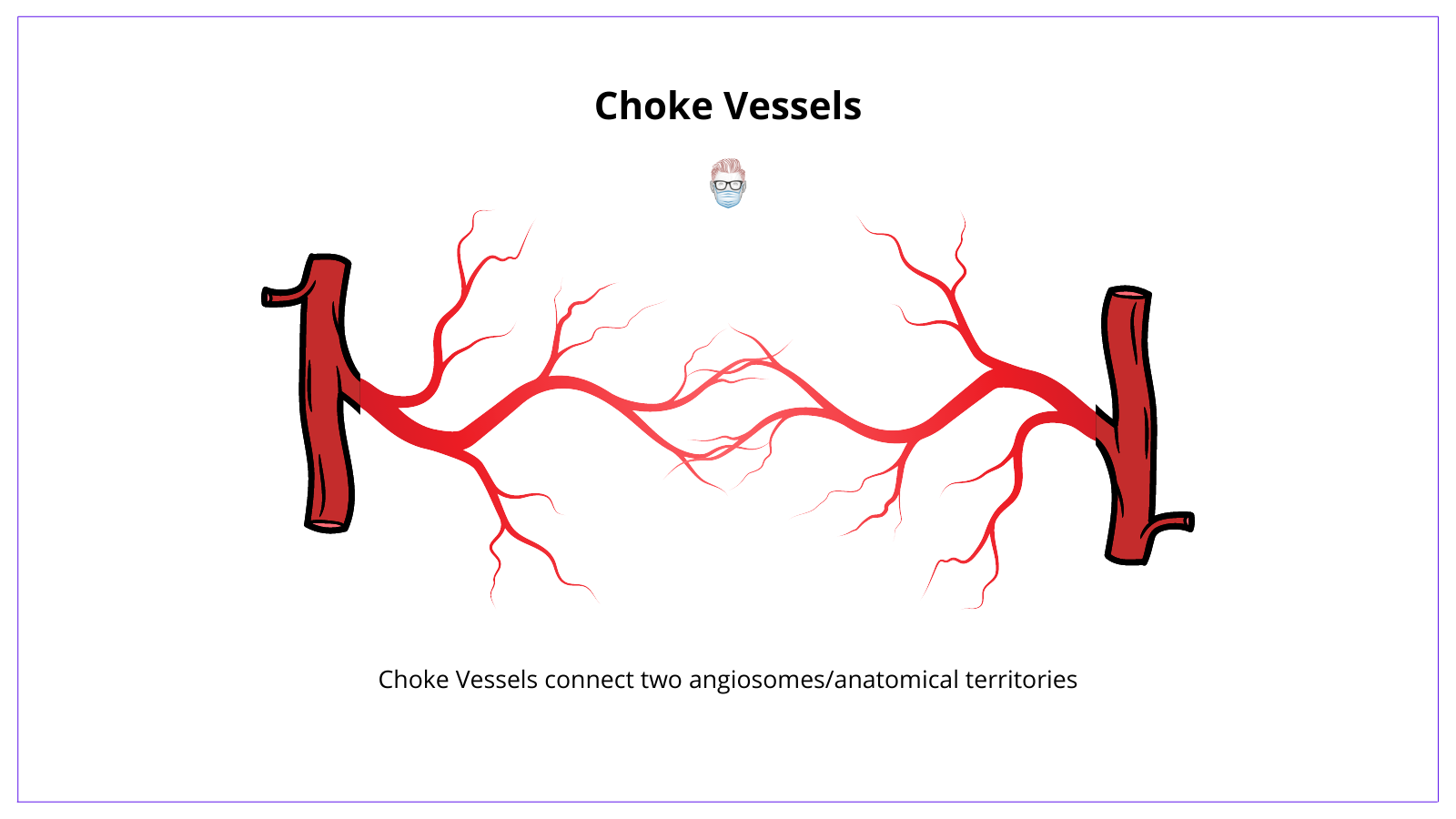
Definition of Angiosomes
The clinical significance of an angiosome is that it defines the tissues available for composite transfer. It helps our understanding of "zones of perfusion" and also the delay phenomenon.
A functional angiosome extends beyond the boundaries of an anatomical angiosome if it is connected by a true anastomosis instead of choke vessels. A choke vessel can be converted to a true anastomosis through the delay phenomenon.

Principles of Angiosomes
- Angiosomes define the territory of the flap
- Source vessels follow the connective tissue framework of the body
- "Law of Equilibrium" - if one vessel is small, its adjacent or contralateral vessel will be larger. For example, a small ALT perforator is small will result in a larger perforator to TFL.
- Vessels travel from a fixed to a mobile area (long flaps can be raised from mobile areas)
- There is a neurovascular relationship (can raise with a nerve and vein).
- Vessels form a continuous unbroken network.
- A vessel's origin may change but its destination is constant.
Here is a video from one of Taylor's colleagues.
Example: DIEP/TRAM Flap
Hartrampfs Zone's of Perfusion provides a nice example of the angiosome theory. The abdomen is divided at the midline to form 2 hemi-abdomens. There are 4 zones and each zone has different levels of perfusion.

- Zone I always correlates to the zone of the selected perforator (most perfused)
- Zone II is adjacent to zone I on the contralateral hemi-abdomen.
- Zone III is lateral to zone I
- Zone IV is lateral to zone II (least perfused)
Choke Vessels
Choke vessels are both arteries and veins. They connect two specific vascular territories. They are reorientated and dilated in the delay phenomenon. Their understanding plays an important role in plastic surgery.
Unlike choke vessels, a "true" anastomosis connecting two angiosomes will not decrease in size and are continuous. Choke vessels can be converted to "true" anastomosis via the delay phenomenon. This is a permanent change that takes at minimum 3 days to occur.

Choke Vessels have specific characteristics:
- Arterial size and orientation are a product of growth
- Arteries have a fixed destination but a varied origin.
- Oscillating avalvular veins accompany choke arteries to allow free flow between valve channels and adjacent venous territories.
.


